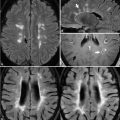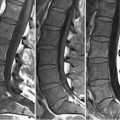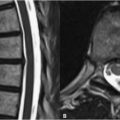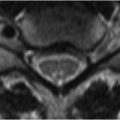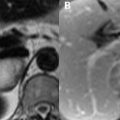79 Cruciate Ligaments Knee MRI identifies tears of the ACL with sensitivity of 95% and specificity approaching 100%. The normal ACL—arising from the posterior inner surface of the lateral femoral condyle and attaching anterolateral to the anterior tibial spine—is seen in Fig. 79.1A. The smooth, continuous fibers of this ligament demonstrate low SI on T1WI and T2WI due to its composition of type I collagen, the rigid architecture of which limits motion of free water, accentuating dipole–dipole interactions between nearby molecules. This increases T2 relaxation and thus decreases SI on T2WI. Linear hyper-intensity proximally within the ligament on T2WI is normal and results from volume averaging with intercondylar fat which is bright on FSE T2WI. Acquisition of sagittal images with the knee externally rotated 15 degrees may be preferred so as to angle sagittal slices parallel to the ACL, with selection of appropriately angled imaging planes achieving the same result. Optimal PCL evaluation is similarly obtained, its normal appearance seen on the T2WI of Fig. 79.1B. The low SI fibers of the PCL span from the medial condyle of the femur to the posterior intercondylar area of the tibia. Any degree of hyperintensity is abnormal within the PCL.
Stay updated, free articles. Join our Telegram channel

Full access? Get Clinical Tree


